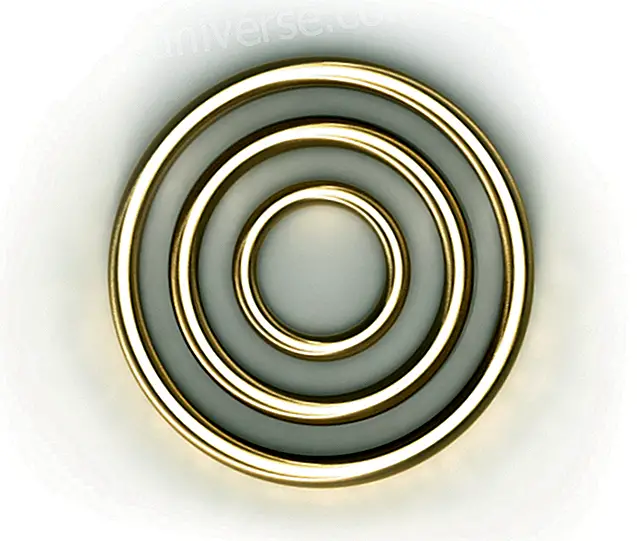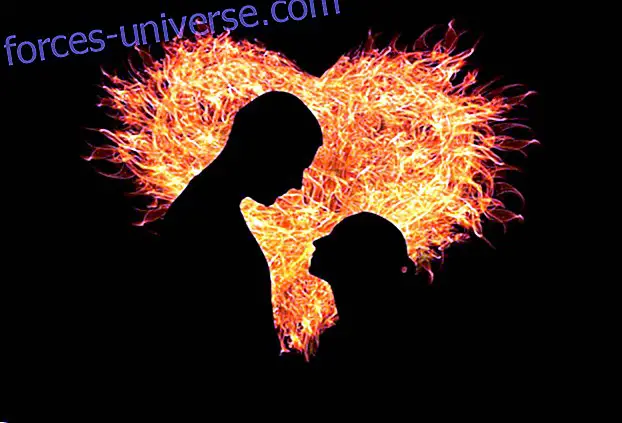Mental health is the state of equilibrium between a person and their socio-cultural environment that guarantees their labor, intellectual and relationship participation to achieve a well-being and quality of life.

The Pan American Health Organization (PAHO) states that health promotion refers both to the prevention and control of the disease and to a process that allows people and communities to maintain and improve their quality of life in the broader sense, that is, in terms of physical and mental well-being, relationships with other people, creativity and productivity, personal satisfaction; and from there, health promotion becomes an instrument to reach the highest level of social and individual well-being of the populations. The promotion of health oriented to the quality of life implies, among other objectives: modify beliefs, change attitudes and values, and improve decision-making. That is to say, the promotion of healthy lifestyles implies knowing those behaviors that improve or undermine the health of individuals and act in this sense, increasing the quality of life indices.
Modifications of the mind: The signs of change
By understanding the mind as a system, we can establish differences and similarities between the brain, mind and consciousness. A system works as a whole, then it has different properties from the parts that compose it, these properties are known as emergent properties, because they emerge from the system while it is in action. The brain seems to delight in these emerging properties. The cerebral control of organized movement gave rise to the generation and nature of the mind. Consciousness is also an emergent property, temperament, emotions, pain, dreams, culture, health and well-being. A germ is an energy point that contains in itself certain living potentialities, causing certain effects on the surrounding energy field.
The state of a system at a time in time is the set of relevant properties that the system has at that time. The values of the pop-up properties constitute the state of the system. The variables used as symptoms are properties of the behavior or performance of the organism or social organization.
SYMPTOM | VARIABLES |
Stress. Anxiety, depression, anger. Abandonment. Fear of rejection, resistance to change. | Cognitive Distortions Automatic thoughts Confirmatory biases |
Beliefs Risk factor's. | Attitudes Imperatives Tragic belief, Compensatory belief. |
Pathological Schemes Feeling of hopelessness Resignation. | Compensatory strategies Avoidance Strategies Self-Realized Prophecies |
Life Proyect. Protective factors. | Virtues, values. Reasons, Ideals. Lifestyle. |
The problems found can be codified as diagnoses, signs or symptoms, fear of illness, disability (physical or mental) or care needs. The symptom is a useful warning that health may be threatened by something psychic, physical, social or a combination thereof. A clinical sign of any objectionable manifestation resulting from a disease or alteration of health, and which is evident in the biology of the patient. In the case of the mind, situations have not been assumed as disease but as problems: A Disorder.
A mental sign would be any objective manifestation consistent with a mental disorder that is evident in the psychology of the individual. The temperament is what facilitates changes in mental state. Psychology is to temperament what the body is to the soul. Temperament is the set of components of a person's psyche, while personality is his expression. Certain types of personalities, such as the optimist or the neurotic, can predispose the subject to certain moods.
The mood: The Self
The state of consciousness is that in which the superior neurocognitive functions are active. The state of consciousness determines the perception and knowledge of the individual psychic world and the world around us. It could be said that there are three states of consciousness in relation to the brain: Alert, dream and coma.
The vigil is a state of alert characterized by a permanent knowledge of himself and his environment. It is a stage of activity.
The dream
Comma is a severe state of loss of consciousness.
Coma | SLEEP | Vigil + |
Society has given much importance to the idea of brain death, however, human death is a phenomenon that is characterized by the irreversible cessation of all vital functions (circulation, breathing and awareness).
The mood is the expression of a person's level of affectivity, so that three basic states can be identified: low or fainthearted mood, high or magnanimous mood, and balanced or equanimous mood.
- Pusilánime | EVEN | Magnanimous + |
Mood undergoes oscillations over time. When it happens within normal limits it is called eutimia. When it is abnormally low it is called depression. When it is abnormally high it is called hypomania or mania. The alternation of phases of depression with phases of mania is called bipolar affective disorder, formerly called manic-depressive psychosis. Cyclothymia is the most harmless variant of the bipolar spectrum characterized by moments of joy and moments of sadness, this leads us to differentiate the mood from emotions.
Cognition is a state of the brain in which a dialogue is established between the thalamus and the cerebral cortex.
The temperament:
Temperament is the individual tendency to respond predictably to environmental facts that form the basis of emotional and behavioral packages of adult personality. Temperament is related to temperance, since it tries to arrange in a balanced way and in correct proportions the elements that form a whole. To be tempered is to be restrained and moderate. Four temperaments try to instinctively balance the blood (air), the nervous (earth), the phlegmatic (water) and the choleric (fire), by doing so they generate mutations, mood swings. The transmutation process consists of moving from one state to another through the action of fire. First the moisture (influence) slow and omnienvolve; then the heat (joy) that grows and burns intensely; then the force (will) oppresses, impels and concentrates. This produces brightness (sensitivity), exudation, mutation, substance change.
Emotions are a subjective state that results from the assessment or evaluation of internal and external stimuli. Emotional states contextualize motor behavior; Thus, pain, and the next step, fear are emotional states.
-Pain | HAPPINESS | Pleasure + |
The cycle of emotions is as follows: pain in the present manifests itself as an offense, pain in the past is remembered as anger, pain in the future is perceived as anxiety. Unexpressed anger, redirected against oneself and contained within, is called guilt. The energy depletion that occurs when anger is directed inward creates depression. Anxiety and depression present as syndromes of mental disorders.
In the history of mankind there are good characterizations of emotional states, according to which these are described as “capital sins” (envy, laziness, gluttony, pride, anger, ambition, lust) and others less known and less related to real emotions, such as "cardinal virtues" (justice, prudence, temperance and strength) and "theologians" (faith, hope and charity). Virtue is the effort to act well, and good is defined by that effort itself.
The virtues reflect the permanent mood of a healthy emotion. Sin must be redefined as deliberate disloyalty to Deity . There are degrees of disloyalty: the partial loyalty of indecision; the ambivalent loyalty of the conflict; the dying loyalty of indifference; and the death of loyalty manifested by devotion to ungodly ideals. The feeling of guilt is the awareness of the violation of normative customs; It is not necessarily sin.
Beliefs are a mental state of representational character that takes as content a proposition (true or false) and intervenes together with motivational factors, in the direction and control of voluntary behavior.
The mortal mind is a temporary system of intellect lent to human beings for use during a material life, and as this mind is used, the potential of eternal existence will be accepted or rejected. The mind is practically all that is held of universal reality that is subject to the will, and the soul - the higher Self - will faithfully illustrate the harvest of the temporal decisions made by the lower self.
The personality:

A personality is a being that has a sense of destiny. Said being possesses sufficient willpower to submit himself to such discipline that he can fulfill the destiny he subconsciously perceives. A human being can truly be considered a personality when the form aspect and the nature of the soul have been unified, this unification is necessary because the personality lives centered on the Form while the individuality on the Soul. Personality includes a set of schemes that regulate and guide human behavior. There have been two criteria to characterize a personality: styles and types.
The style has to do with the satisfaction we derive from the actions we take instead of what motivates us to do them. Persistent preferences independent of efficiency among the means used to achieve an end, are called traits. Gordon Allport produced a list of 18, 000 words that would give clues to detect basic personality types.
The psychological types proposed by Carl Jung start from the way of reaction to the inner or outer environment, giving rise to the variables of introversion-extroversion. Centered or balanced people are considered self-conscious.
–Introversion | AUTOCONCIENCE | Extroversion + |
As for the sensitivity with which the environment is reacted, the variables are subjectivity (intuition) -objectivity (sensation).
-Subjectivity | PERCEPTION | Objectivity + |
With regard to decision making, people can be rational or emotional, people centered themselves, are showing firmness. The true strength of virtue is the tranquility of mind, the thoughtful and firm resolve to act according to the law.
–Emotivity | FIRMNESS | Rationality + |
In relation to human relationships, people can be apathetic or sympathetic. Empathy is a sign of altruism.
-Apathy | EMPATHY | Sympathy + |
These four variables gave rise to 16 personality types known as the Myers-Briggs indicator. Other authors reduced the list of traits to five basic categories that include extroversion, awareness, emotional stability, affability and openness, the latter being understood as receptivity to new experiences, which shows a certain feature of ideology.
-Conservative | ADAPTABLE | Liberal + |
There is a known relationship between the extremes of personality traits and personality disorders. There are three main types of these disorders:
- Eccentric behavior: paranoia.
- The dramatic behavior: the histronic.
- Anxious behavior: Obsessive compulsive.
What used to be called multiple personalities today is considered a dissociative personality disorder.
The Character:
The character is the extent to which the mind has materialized for a certain purpose and can resist disintegrating influences. It is the end result of the interaction of two factors that are found in the personality, the hierarchy of values or conscious purposes, erected in the course of a life, and the extent to which this intellectual structure She is excited and vitalized by temperament. The end result can be described as degrees of honesty, subordination, nobility, morality or something like that. Sanity, for example, is the mental state of the prudent and sensible person, contrary to madness.
Moral development is a continuum that goes from heteronomy to autonomy. Heteronomic morality that is based on custom and authority, is transformed by a long and complex process into a rational moral: ethical judgment. Moral autonomy refers to the last stage in the evolution of ethical judgment, in which the individual judges according to universal ethical principles.
Heteronom a | INTERACTION | Autonomy + |
Values are those goals and principles that guide our life, motivate the action and function as criteria to judge and justify the action. The contents of conscience act as a norm of morality, we turn to them to establish value judgments of a given situation. The judgment of the conscience confronts all the contents that have relation with a certain action or situation. Consciousness reconciles the contradictions to the maximum and the creative synthesis arises: the understanding. But the one that defines whether the trial or decision is fair or unfair, is the reason.
The reasoning arises from a system of relationships established in a conceptual network, which serves as scaffolding to shape value judgments. The complexity of the system of relationships is what defines the level of moral competence of people to judge and solve problems, in the moral field: dilemmas. The ethics of character is based on the fundamental idea that there are principles that govern human effectiveness.
The principles are natural laws that cannot be broken.
Achieving coherence between the way of thinking, feeling and acting is the objective of the conceptual dynamic, thus identifying the vital task by establishing a psychological balance between explanation and experience, the rational and the experiential, the awareness of being involved in life and to occupy a place in the world. When this existential coherence is broken, alterations of different types occur, presenting themselves as pathologies.
Be | Perform | ACT | Get free | to love |
The conceptual dynamics not only depends on the types of paternofilial relationships, but also on the age at which the child had a traumatic life experience that prompted him to block his feelings and, therefore, the energy flow, thus initiating the development of a system of defense that becomes habitual. Schizoid, Oral, Psychopath, Masochist, Rigid.
The intelligence:
The high-level mental capacity that includes learning, memory and thinking is known as intelligence. Intelligence is an emerging property of the human mind. An intelligence is one that is not affected in case of brain damage, shows a sequential and progressive development, implies one or more information processing operations that gravitate towards its systematization in a symbolic system.
The IQ was the indicator used to measure the level of intelligence of a person, relates the mental age with the chronological age.
Moron | Fool | SMART | Sparkly | Gifted |
The average IQ of a population is considered to be 100 points. All values above it indicate that a person is above average, while a value below 100 points indicates that a person is below average.
Gardner defines intelligence as "the ability to solve problems and / or develop products that are valuable in one or more cultures." According to Gardner, there are many ways to do this and not only through mathematical and linguistic intelligence. The concept of multiple intelligences offers an alternative vision that emphasizes the different abilities of individuals, recognizing that individuals have different styles, strengths and limitations, and therefore it is necessary to adjust the educational process to those individualities. Gardner believes that the purpose of the school “should be to develop all intelligences and help people achieve goals that are appropriate for their intelligence (which they have more developed). The people who are helped to do this, he believes that they will be more committed and competent, therefore, more inclined to serve society in a constructive way. ”
Logic | Idealism | Harmony | Science | Ingenuity |
It is necessary to observe more closely the individuals and the way in which each one develops the necessary and fundamental skills in handling the obstacles and circumstances that exist in the cultural environment where they live. We must take into account the roles that each one plays in his social context and the problems that he has to solve. Thus, the concept of competency assessment related to the performance assessment proposed by the business administration was emerging.
Basic | Citizens | Scientists | Artistic | Labor |
The assessment of competences is done through the application of written tests of closed choice, that is, each question in the questionnaire describes a problem or situation to be solved that is presented by means of a statement accompanied by three or four response options. The examinee must choose the option that best responds to the situation.
The evaluation of school performance is defined as “the weighting of the degree of fulfillment of the tasks and responsibilities inherent in the student's role and the achievement of results, through their behavior”
Low <20 | Basic 21-40 | MEANS, MEDIUM 41-60 | Tall 61-80 | Higher > 81 |
The evaluation criteria in real life is the efficiency with which we perform a job. We are expected to manage all the resources at our disposal to carry out the task. Intelligence is the ability to increase efficiency, wisdom is the ability to increase effectiveness.
Wisdom is the power to glimpse the long-term consequences of present actions, to be willing to sacrifice short-term achievements for the greater benefits of the long term, and the ability to control what is controllable and not wear out with what is not it is. Therefore, the essence of wisdom is the concern for the future. The intention of the wise man is to control him.
TRANSITION OF THE MIND TO THE SOUL: States of consciousness

All individual souls, in the right conditions, can be in a subconscious, conscious or supraconscious state, these are the three psychic states of consciousness .
The mind is the cosmic instrument on which the human will can approach death, or on which this same will can approach eternal life. The mental signs show whether we are close to animal consciousness or closer to divine consciousness. And it is not so much what the mind understands, but rather what it wishes to understand, that which ensures survival; It is not so much how the mind is, but how the mind is trying to be what constitutes the spiritual identification.
Thought, as high level processing, involves activity in the cerebral cortex. When thinking, we use existing information / ideas to generate a new one. In general, thought is divided into conscious and unconscious. Rational thinking, such as decision making and reasoning, is classified in the category of conscious. Problem solving and creativity encompasses a mixture of conscious and unconscious thinking. Thought involves coordinated activity in several regions of the brain, there are nine of these areas, five of which belong to the left side and four to the right side. The distortion of thought is what generates the subconscious, while the light of the soul illuminates the superconscious.
-Subconscious | AWARE | Supraconscious + |
Human consciousness rests gently on the electrochemical mechanism of the lower self, and delicately touches the spirit energy system of the higher self. During mortal life, the human being is never fully aware of either of these two systems; therefore you must work in the mind, of which you are aware.
The concrete state of mind: The Self
It expresses itself almost completely through concrete science, reflecting the lower phase of the will aspect of divinity, summarizing in itself all the knowledge and memory of the Self. This concrete lower mind is related to the petals of the lotus knowledge, being able to obtain a pronounced illumination of the soul and eventually prove that it is the beacon of the soul. It can be controlled by the concentration process. It is transitory in time and space.
Mental state would refer to the influence of certain variables on cognitive performance in general. Among these variables will be: age, sex, language, education, emotion, family history, sensory deficits, drug or drug use, subjective complaints of the patient and his relatives, etc.
State of practical mind: The Higher Self
It focuses on the reflexive principle that religion has been intended to occupy.
It reflects the lower phase of the love aspect of divinity and summarizes in itself the results of all the accumulated knowledge, which is wisdom illuminated by the light of intuition. Enters functioning activity through meditation. He then controls and uses the concentrated personality, for his own spiritual purposes, through the aforementioned enlightened mind. It is eternal in time and space.
State of the Abstract Mind: The Independent Will
It works with the reasoning principle that philosophy has dealt with. Custody the canons and that which brings illumination to the concrete mind. It is fully revealed by the influence of Will or Power, reflecting the superior aspect of the will of the divinity: It summarizes in itself, when the purpose of the Deity has been fully developed, thus becoming responsible for the emergence of the Plan. It energizes the petals of the will, until the moment in which the eternal life of the soul is absorbed by that which is neither transitory nor eternal, but endless, unlimited and unknown. It is put into conscious operation by building the rainbow bridge.
When the personality begins to transmute knowledge into wisdom, the focus of the personality life is transferred to the mental plane, since the transformation (with its stages of understanding, analysis, recognition and application) is fundamentally a mental process The personality also begins to understand the meaning of love and interpret it in terms of the well-being of the group and not in terms of the personal self, desire, or aspiration. True love is correctly understood only by the mentally, spiritually oriented individual.
When the foundations of good character and intelligent activity are firmly established - something even higher and more subtle must be built on the substructure.
Knowledge-wisdom, must be replaced by intuitive understanding.
Love-desire, must be interpreted in terms of divine attraction.
Will-direction, should be understood as the final orientation of the personality and soul, fused, mixed and unified, towards the liberation of the pure Spirit.
In the words Symbol, Meaning, Significance and Illumination, we find the key to the transfiguration process. Light is emanating creative energy - the organizer of the symbol, the revealer of meaning and the power of meaning. The world of symbols is that of personal life, that of the phenomenal world, the material Triad of personality; the world of meaning is where the soul lives and acts with intention and understanding; the world of significations is that of the spiritual Triad, which only confers liberation fully in that world, after the transfiguration.
A mortal personality is considered dead when the essential circuits of the mind of human volitional action have been destroyed, when the vital circuits of the highest mental assistant (wisdom) are interrupted by the aberrations of the intellect or by the partial destruction of the mechanism of the brain, and if these conditions pass to a certain critical point of irreparability, thought is immediately released.
This is death, despite the continued function of the living mechanisms of the physical body. The body minus the volitional mind is no longer human, but according to the previous selection of the human will, the soul of that individual can survive.
After death, the material body returns to the elementary world from which it was derived, but two non-material factors of the surviving personality persist: the pre-existing Thought, with the transcription of the memory of the mortal race, goes to the celestial world; at the same time the immortal soul of the deceased human remains in the custody of the guardian angel. These phases and forms of the soul, these once-kinetic but static static identity formulas, are essential for repersonalization in the transition worlds; and it is the meeting of Thought with the soul that reconstitutes the surviving personality, which makes you aware at the time of spiritual awakening.
Personality can survive mortal death with identity in the surviving soul. Thought and personality are unalterable; the relationship between them (in the soul) is nothing but change, continued evolution; and if this change (development) ceases, the soul would cease.
Personality is basically invariable. What changes, what develops, is the moral character. A person forms an effective philosophy of life by combining insight with the sum of their own emotional reactions to the social and economic environment. In a strong character, emotional reactions are integrated and coordinated, thus generating a unified personality. The lack of unification weakens the moral nature and engenders misery. Without a worthwhile goal, life lacks objective and profit, which causes much unhappiness. Education should be a technique to learn (discover) the best methods of satisfying our natural and hereditary impulses, and happiness is the end result of these better emotional satisfaction techniques.






